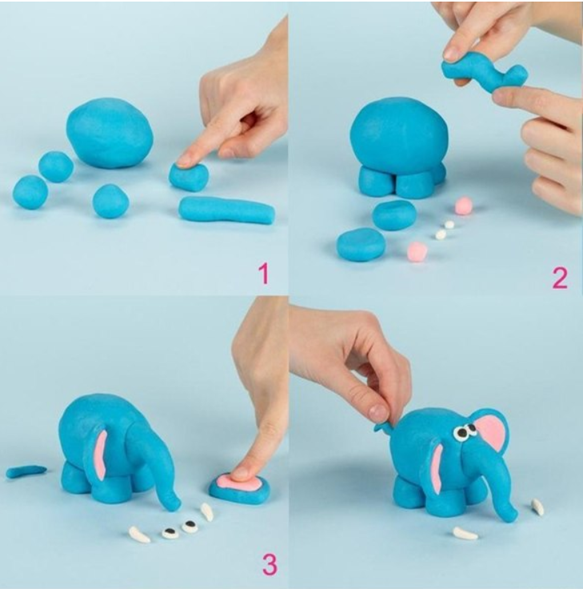
Table of Contents
Officialtollfree – Creating homemade clay can be an enjoyable and rewarding activity, offering a plethora of methods to explore depending on the materials you have on hand and your desired outcomes. Whether you’re looking for a simple recipe or something more elaborate, there’s a clay-making method for everyone. Let’s dive into some popular techniques and their step-by-step instructions.
Easy Ways to Make Plasticine
1. Simple Clay
Ingredients:
- All-purpose flour
- Water
- Vegetable oil
- Salt
- Food coloring
Steps:
- In a saucepan, combine water, vegetable oil, and salt. Heat the mixture until warm.
- Transfer the warm mixture to a mixing bowl.
- Gradually add all-purpose flour while stirring until the mixture forms a dough-like consistency.
- Place the dough on wax paper and allow it to cool.
- Knead the cooled dough until it becomes smooth and clay-like.
- Optionally, add food coloring to the dough before kneading to create colorful clay.
- Store the clay in an airtight container to keep it fresh.
2. Bread Clay
Ingredients:
- 6 slices of bread
- Glue
- Dish soap or glycerin
- Food coloring
- Paintbrush
- Water
- Acrylic paint or clear nail polish
Steps:
- Tear the bread into small pieces and knead it with glue and dish soap or glycerin until it forms a pliable dough.
- Divide the dough into portions and mix in food coloring to achieve the desired hues.
- Use a paintbrush to coat the exterior of the clay with acrylic paint or clear nail polish for a glossy finish.
3. No-Cook Clay
Ingredients:
- Cornstarch
- Cold water
- Baking soda
- Food coloring
- Damp cloth
Steps:
- In a saucepan, combine cornstarch, cold water, and baking soda.
- Stir the mixture over low heat until it thickens and forms a dough.
- Remove the dough from the heat and cover it with a damp cloth to prevent drying.
- Once cooled, knead the dough until smooth and add food coloring for vibrant colors.
4. 3-Ingredient Clay
Ingredients:
- Salt
- All-purpose flour
- Water
- Food coloring (optional)
Steps:
- Pour water into a saucepan and gradually add salt until fully dissolved.
- Stir in all-purpose flour until the mixture thickens and forms a dough.
- Knead the dough until it reaches a smooth consistency.
- Optionally, incorporate food coloring to add a pop of color to your clay creations.
5. Aromatic Clay
Ingredients:
- All-purpose flour
- Salt
- Cream of tartar
- Vegetable oil
- Hot water
- Aromatic essential oil
- Food coloring
Steps:
- Combine salt, all-purpose flour, and cream of tartar in a mixing bowl.
- Add vegetable oil and aromatic essential oil to the dry ingredients, mixing well.
- Gradually pour hot water into the mixture, stirring until a smooth dough forms.
- Divide the dough and add food coloring to create different colored clay options.
In conclusion, creating homemade clay offers a versatile and enjoyable way to engage in artistic endeavors or craft projects with children. The methods outlined provide a range of options to suit different preferences and ingredient availability, from simple recipes requiring basic pantry staples to more elaborate formulations for those seeking a unique sensory experience. Whether you opt for the simplicity of flour and water or the aromatic richness of essential oils, each recipe offers its own charm and opportunities for creativity.
Furthermore, beyond the satisfaction of crafting your own clay, these activities promote hands-on learning and sensory exploration, making them ideal for educational settings or family bonding time. By experimenting with various ingredients and techniques, individuals can develop their artistic skills, explore color theory, and unleash their imagination. Additionally, the process of making clay fosters patience, perseverance, and problem-solving skills, as individuals navigate the nuances of texture and consistency to achieve their desired results. Overall, homemade clay-making is not just about creating art—it’s about fostering creativity, learning, and joyful experiences that can be shared and cherished with others.
DA
